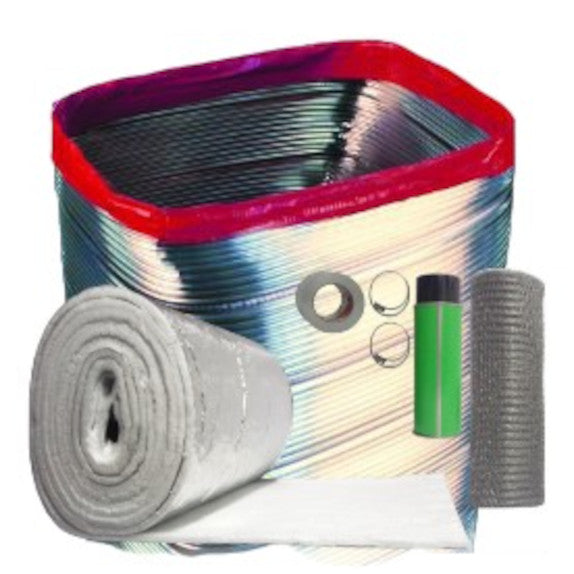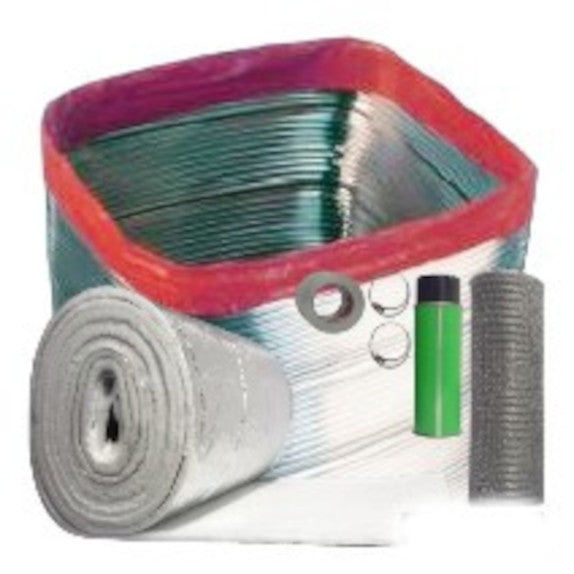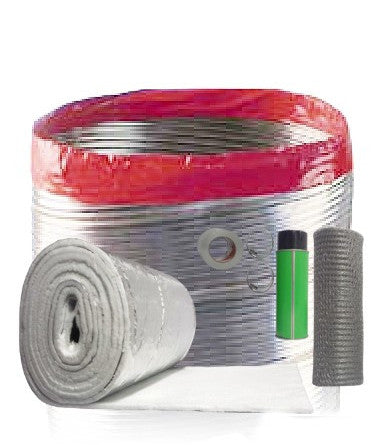Is a Chimney Liner necessary?
July 19, 2023
When Do You Need A Chimney Liner?
Some Areas Require A Chimney Liner
All areas require a chimney liner of some type. It could be a terra-cotta clay flue, stainless steel flue liner or the heat shield flue lining. An unlined brick or block chimney should never be used to vent any type of heating appliance or fireplace. Some local jurisdictions do require certain types of flue liners as opposed to others. It is not uncommon to have building code officials require stainless steel flue liners for a chimney.
Chimney Damage

If your current chimney flue has any cracks or missing mortar joints between the flue tiles, the flue is deemed unusable. Cracks in the flue can happen from chimney fires, the settling of the home or excess moisture in the flue. It is very important to fix a damaged flue right away to prevent any carbon monoxide or creosote leakage. A video camera chimney inspection will allow you to view the condition of the inside of the flue. It is best to have the chimney inspected regularly to ensure the safety of the chimney. Installing a stainless steel chimney liner is the easiest solution to repair the chimney flue without having to demo and reconstruct a new chimney and flue.
Signs Of Condensation And Moisture
If you notice moisture around the base of the chimney, it is likely not a leak in the home's foundation or walls. The moisture is likely coming from inside the flue from condensation. Condensation and moisture is the silent killer to a terra-cotta clay flue. Excess condensation inside a clay flue will cause the mortar joints between the flues to wash away over time. Condensation is commonly caused by gas and oil burning appliances venting in the chimney.
Gas and oil appliances have a much lower flue temperature than a wood stove or fireplace and as the flue gas travels up the chimney it begins to cool creating condensation. Gas and oil appliances have made great strides with efficiency over the years. The more efficient the appliance the less fuel is wasted up the chimney and the lower the flue temperature. This allows gas to condense inside the chimney more quickly which causes it to essentially rain inside the flue. There is also the possibility that the current chimney flue might be too large for the appliance. This will cause the gas to cool much more rapidly because there is not enough heat in the flue to generate a good draft. In these situations a chimney liner would be the perfect fix. The liner will likely be much smaller than the existing flue and sized properly for the appliance to function properly. The stainless steel liner will increase the flue temperature, reducing condensation. If you live in a cold climate, you can insulate the stainless steel liner to keep the flue temperature even hotter.
Converting Your Fireplace
Converting your fireplace to a much more efficient wood or gas stove insert is a great way to improve the efficiency of the fireplace. Installing a stove insert will require a chimney liner to be installed to properly vent the stove. Typically for a wood stove insert, a 6" liner is required to be installed in the chimney. Collinear chimney liners are required for venting a gas stove. A collinear chimney liner consists of two 3" or 4" liners for the exhaust and fresh air intake. Having the liner connected directly to the top of the insert all the way to the top of the chimney will make cleaning the chimney a breeze.
Should You Get A Chimney Liner Even Without The Above Issues?
A chimney liner is generally out of sight and out of mind to most homeowners. Ensuring the safety of the chimney and the heating appliance should be the number one priority in any home. Combustion gases can be very harmful if leakage occurs in your home. Installing a stainless steel liner in a chimney flue that is in good condition is going to increase the longevity of the flue significantly. The fail rate of a stainless steel chimney liner is much less than a clay terra cotta flue so you can have peace of mind knowing your heating appliances are safely venting the combustion gas for many many years.
Best Chimney Liner Products

If your chimney is straight up and down without any offsets, the 316L or 304L rigid chimney liner is the best option. If you are just burning wood, the 304L rigid chimney liner(opens in a new tab) is a great choice. If you are burning gas, oil, propane, coal or wood the 316L rigid chimney liner(opens in a new tab) is the best choice. The rigid liner is the easiest chimney liner to clean which makes your yearly maintenance a breeze. The rigid liner will require the chimney flue to be completely straight in order to install the liner. The rigid liner is sold in sections and requires you to rivet them together.
If your chimney flue has a slight angle or a bend, the 316Ti stainless steel flexible chimney liner(opens in a new tab) has been leading the industry for decades. The 316Ti flexible liner can be used with any fuel type and can withstand temperatures of up to 2100 degrees Fahrenheit. The flexible chimney liner is able to snake down a chimney with offsets without a problem. This is great for wood stove inserts where the liner has to bend around a smoke chamber.
Chimney liner insulation is always recommended when installing a liner. In some cases the insulation is required, such as installing a chimney liner in an unlined brick chimney without a clay flue. The chimney liner insulation is offered as a blanket wrap kit(opens in a new tab), a snap wrap insulation(opens in a new tab) for rigid chimney liners as well as a pour down insulation(opens in a new tab). The chimney liner insulation will keep the flue gas hot which will prevent the flue gas from condensing. This will help minimize the amount of creosote that is produced when burning wood. In cold climates, the chimney liner insulation is highly recommended for gas and oil burning central heating appliances to ensure the chimney flue has a good draft.
DIY Center
(AKA ‘The Rockford Files’)
From video tutorials to product walkthroughs, we have a variety of DIY resources just for you! Click the button below to view our entire library.








